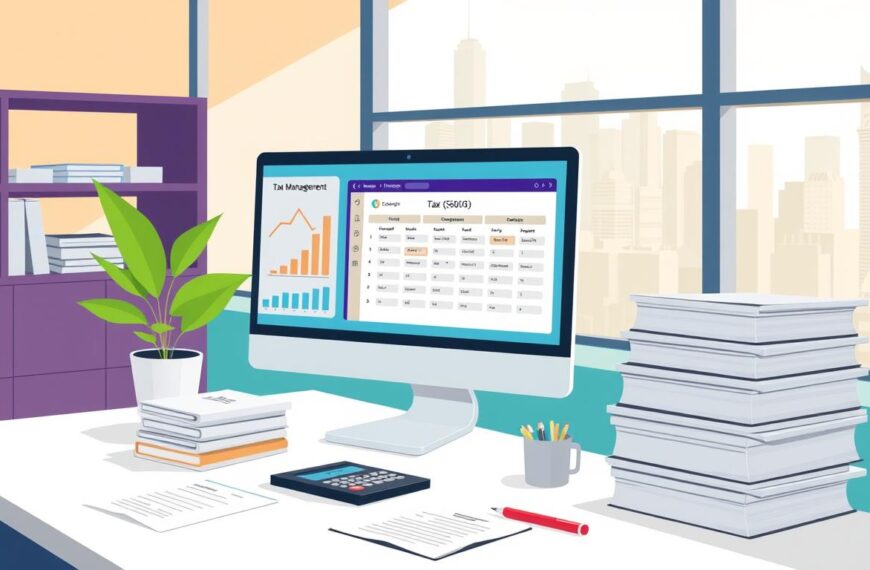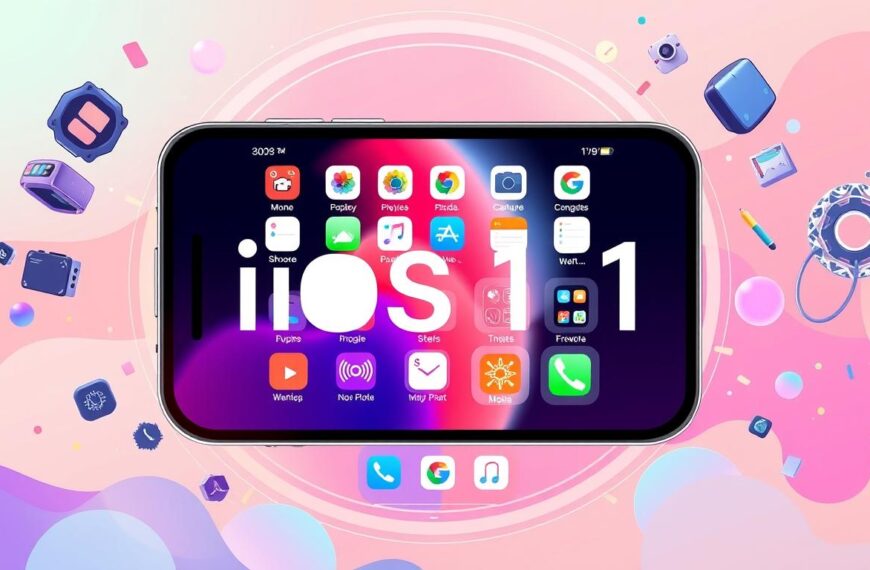The world is getting more digital, and blockchain tech is growing beyond just cryptocurrencies and NFTs. It’s now used to turn traditional assets into digital tokens. This change opens up new chances for investors, businesses, and more. Bill Gates said, “The impact of technology on business and society is becoming more and more evident every day.” Asset tokenization is set to make a huge impact.
Asset tokenization turns real estate, art, or bonds into digital tokens on a blockchain. This new way of managing assets makes things more transparent and secure. It also makes investing more open and efficient. Warren Buffett noted, “Tokenization is likely to play a big role in the future of finance.”
Key Takeaways
- Asset tokenization enables the representation of ownership rights of traditional assets as digital tokens on a blockchain.
- Tokenized assets can be traded more efficiently and transparently, potentially increasing market liquidity and accessibility.
- Blockchain technology provides a secure and decentralized platform for tracking the ownership and transfer of tokenized assets.
- Tokenization can unlock new revenue streams and market segments for businesses and financial institutions.
- Regulatory frameworks are evolving to accommodate the growth of asset tokenization, paving the way for wider adoption.
What is Asset Tokenization?
Asset tokenization turns the rights to physical or digital assets into digital tokens. These tokens can be traded on a blockchain network. This method lets people own parts of assets like real estate, fine art, and intellectual property.
Understanding the Concept
Cryptocurrencies like Bitcoin and Ether are getting more popular. Asset tokenization uses blockchain to record ownership rights. Smart contracts manage the creation, tracking, and benefits of these tokens.
Tokenizing Traditional Assets
Blockchain technology changes real-world assets into digital tokens. This makes it easier to own parts of assets. It opens up investment opportunities in areas like real estate and art to more people.
These tokens can be bought and sold quickly. This makes markets more efficient and cuts down on the need for middlemen.
| Asset Tokenization Highlights | Benefits |
|---|---|
| Fractional Ownership | Increased accessibility and inclusivity for investors |
| Enhanced Liquidity | Easier buying and selling of assets |
| Improved Transparency | Secure and transparent record of asset ownership |
| Streamlined Transactions | Reduced need for intermediaries and faster settlement |
“Asset tokenization has the potential to disrupt industries and transform the global securities sector, as demonstrated by the interest and adoption from major enterprises.”
The Tokenization Process
The tokenization process changes how we manage digital assets. It uses blockchain to turn traditional assets into digital tokens. This method brings many benefits, like more liquidity, better transparency, and easier access for investors. Let’s look at the main steps in this process.
Creating Digital Tokens
The first step is making digital tokens that stand for shares or ownership in real assets. These tokens are on blockchain networks. Each token is unique and shows the asset’s authenticity and scarcity. This makes owning these digital assets secure and transparent.
Smart Contract Implementation
After making the tokens, smart contracts are set up. These contracts handle the tokens’ issuance, balance, and payouts. They make sure transactions are transparent and automatic. This cuts down on the need for middlemen and boosts efficiency.
Token Distribution and Sale
Then, the tokens are sold to investors. They can be sold privately or publicly. This makes it easier for people to buy parts of assets they couldn’t before. It’s like buying a fraction of a big asset.
Asset Management and Governance
Token holders get to help manage and decide on the asset. They can vote on important issues and get payouts based on their tokens. This way, they have a say in how the asset is run.
Secondary Market Trading
Finally, these tokens can be traded on secondary markets. This makes the assets more liquid. The digital tokens make transactions faster and safer. This opens up these assets to more people.
The tokenization process is a new way to manage assets. It uses blockchain to change how we trade and govern assets. It promises to make finance more transparent, efficient, and open to everyone.
Asset Tokenization
Asset tokenization is a new way to record rights to assets like real estate, art, or financial instruments on a blockchain. It turns these assets into digital tokens. This method offers benefits like easier access, more liquidity, and clearer ownership compared to old ways.
One big plus is that it lets you own a piece of something big in small, digital bits. For example, the value of tokenized gold hit $1 billion in April 2023. This shows more people want to invest in digital tokens backed by real assets.
It also makes markets work better and faster. Over $200 million worth of tokenized securities, like bonds and ETFs, are now on public blockchains. This makes buying, selling, and managing assets easier and quicker.
Big names like banks, central banks, and fintech companies are looking into tokenizing many assets. For instance, Société Générale’s Forge helped the European Investment Bank issue a digital bond. This bond had strong KYC/AML and other controls.
| Asset Tokenization Example | Details |
|---|---|
| EIB Digital Bond | The EIB issued a 100 million euro, two-year “digital bond” on a platform using Ethereum. The zero-coupon bond was sold at a reoffer price of 101.213 percent. |
| Santander Bond | Santander issued a one-year, $20 million bond on Ethereum with a 1.98 percent quarterly coupon. |
As Asset Tokenization and Blockchain Applications grow, we’ll see more creative uses. This technology is changing how we deal with and manage different types of assets.
Benefits of Asset Tokenization
Asset tokenization is changing how we invest and access different assets. This new tech brings many benefits that are reshaping the investment world.
Democratization of Access
One big plus of asset tokenization is making investments more accessible. It lets people own parts of assets, not just the whole thing. This opens up markets like real estate, art, and collectibles to more people.
Market Fluidity and Efficiency
Tokenization makes markets more fluid and efficient. It turns hard-to-sell assets into something that can be traded easily online. This means investors can buy and sell whenever they want, making things more flexible and accessible.
Also, blockchain technology behind tokenization cuts down on costs. It automates processes and reduces the need for middlemen. This makes transactions cheaper and more efficient.
Security and Transparency
Asset tokenization uses blockchain, which is secure and transparent. This means tokenized assets are safe from fraud and counterfeiting. It also lets investors see who owns what and how trades happen.
In summary, asset tokenization brings many benefits. It makes investing more open, markets more efficient, and assets more secure. As this tech grows, it will open up new chances for investors and the financial world.
Asset Tokenization Use Cases
Asset tokenization is changing many industries. It helps both individuals and businesses. It’s making investing and trading easier.
Tokenized Real Estate
Tokenizing real estate makes big investments more open to everyone. It breaks down big properties into digital tokens. This lets more people get into real estate.
It also makes it easier to sell these tokens on secondary markets. This means more people can invest and trade in real estate.
A recent report shows a 30-40% growth in tokenized real estate’s market value. This is because it’s now more liquid. It opens up new chances for investors.
Tokenized Bonds
Tokenizing bonds makes things more efficient and opens up new ways to make money. It uses blockchain to make bond issuance and management smoother. This cuts down on costs and makes things more transparent and secure.
A study by Coingecko found that commodity-backed tokens, like bonds, hit over 1 billion USD in value in early 2024. Gold is the top choice for tokenization. This shows how asset tokenization is growing in finance.
Risks and Challenges of Asset Tokenization
Asset tokenization has big benefits but also faces risks and challenges. These include legal and regulatory uncertainty, the complexity of technology, and security risks like hacking and fraud.
Regulatory Uncertainty
The legal and regulatory landscape for tokenized assets is unclear in many places. It’s hard to navigate the complex rules of securities, property, and taxes. Without clear guidelines, there are compliance issues and legal risks for everyone involved.
Technological Complexity
Creating a successful asset tokenization platform needs a lot of tech know-how. It’s tough to set up the right infrastructure, design smart contracts, and keep digital tokens safe. Any tech problems or hacking attempts can harm the whole process and shake investor trust.
Security Risks
Asset Tokenization Risks like hacking, fraud, and theft are big worries. The decentralized blockchain technology makes tokenized assets vulnerable to cyberattacks. This could lead to lost investor funds or compromised asset ownership records. It’s vital to have strong security and risk management to tackle these Security Risks.
| Risk | Description |
|---|---|
| Regulatory Uncertainty | Unclear legal and regulatory frameworks for tokenized assets, leading to compliance challenges and legal risks. |
| Technological Complexity | Ensuring the proper infrastructure, smart contract design, and secure storage of digital tokens can be challenging. |
| Security Risks | Vulnerability to hacking, fraud, and theft, which can compromise the integrity of the tokenization process and investor funds. |
It’s key to tackle these Asset Tokenization Risks for asset tokenization to succeed. We need to keep working on regulatory clarity, improve technology, and boost security. This will help the field grow and become more stable.
Examples of Tokenized Assets
The world of asset tokenization has seen many real-world examples. These show the wide range of possibilities this technology offers. From tokenized real estate to tokenized bonds and tokenized commodities, there are many investment options for both individuals and institutions.
The St. Regis Aspen Resort is a notable example. Now, investors can own digital shares of this luxury property through blockchain tokens. Titanic Distillers Whiskey has also been tokenized. This lets fans and collectors own a part of this rare spirit.
In finance, tokenizing U.S. Treasuries has opened new ways for investors. This makes these usually hard-to-access instruments more available.
Tokenizing physical gold is also popular. Platforms like Tether Gold (XAUT) and PAX Gold (PAXG) are leading this trend. These tokens offer investors a way to own gold securely and transparently.
| Tokenized Asset | Description | Key Benefits |
|---|---|---|
| St. Regis Aspen Resort | Luxury real estate property tokenized on the blockchain, enabling fractional ownership. | Democratization of access, enhanced liquidity, and global investment opportunities. |
| Titanic Distillers Whiskey | Rare and exclusive whiskey tokenized, allowing investors to own digital shares. | Fractional ownership of high-value luxury goods, improved investment diversification. |
| U.S. Treasuries | Government bonds tokenized, providing enhanced accessibility and liquidity. | Increased transparency, improved trading efficiency, and expanded investment options. |
| Tether Gold (XAUT) and PAX Gold (PAXG) | Tokenized physical gold, enabling investors to gain exposure to the precious metal. | Secure and transparent ownership, increased liquidity, and easy trading and storage. |
These examples show how tokenized assets can change the game. They offer new chances for investors, make access easier, and open up new markets.
The Future of Asset Tokenization
Blockchain technology is getting better, and so is the future of asset tokenization. We’re seeing smarter contracts, better security, and regulatory developments for tokenized assets. These changes will help more people use and trust tokenization in finance and markets.
Blockchain Technology Advancements are making asset tokenization more appealing. Smart contracts can now handle complex tasks like royalty payments and voting. Also, new security measures like advanced cryptography and decentralized storage make tokens safer.
Regulatory Developments are also key. Clearer rules from governments and financial bodies will boost investor trust. This will lead to more people and institutions using tokenization, speeding up its mainstream adoption.
| Key Opportunities in Asset Tokenization | Potential Impact by 2030 |
|---|---|
| Fractional Ownership and Access to Alternative Investments | $400 billion opportunity to access alternative investments |
| Increased Liquidity and Reduced Transaction Costs | Up to 80% reduction in bond issuance costs, leading to $4.83 billion in total cost savings |
| Transparency and Automation through Smart Contracts | $10 billion worth of tokenized bonds issued globally |
| Reshaping Real Estate and Commodity Markets | Trillions of dollars of assets being transacted on-chain per month in the first at-scale applications |
The Future of Asset Tokenization is exciting. It will change how we do finance and markets. With Blockchain Technology Advancements, Regulatory Developments, and Mainstream Adoption, tokenized assets could change the game for investors and businesses.
“The total tokenized market capitalization could reach around $2 trillion by 2030 (excluding cryptocurrencies like Bitcoin and stablecoins) with a potential to double to $4 trillion.”
Conclusion
Asset tokenization is changing how we own, trade, and manage traditional assets. It uses blockchain technology. This new way is still growing, but it’s already showing big benefits like easier access, more liquidity, and clear transparency.
Experts think we could see $4 trillion to $5 trillion in digital securities by 2030. This shows how big the market could get.
But, there are also challenges. Things like legal issues, tech complexity, and high costs need to be solved. We also face problems like not enough places to keep digital assets safe and how to make different systems work together.
Despite these hurdles, the future looks good. Tokenization could make investing more open to everyone. It could also make financial markets more efficient, clear, and safe.
Blockchain can help with following rules, making it easier to buy and sell assets, and saving money by automating tasks. With a growth rate of 18.8% from 2023 to 2032, the outlook for tokenization is very positive.
















